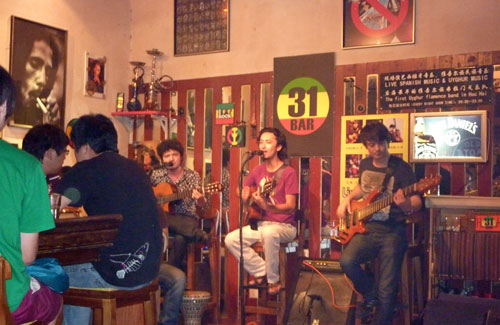Uyghur Music A Small Sample: I am uploading a some of the Uyghur songs that I’ve got hooked on recently.
The first, by a group called Qetic, is called Izlidim. It’s an incredibly beautiful and catchy pop song. I’d love to know what the lyrics mean (can anyone help?). The singer Perhat Khaliq, is probably the most famous Uyghur musician in China and around the world. Click below
He seems too be very popular among Uyghurs and Chinese alike.
It seems that the original video of Qetic Izlidim has been taken down. Here is a link to the song from our photo Video.
Tar Kucha
The second is a far more traditional song; Tar Kucha. The video that accompanies the song shows parts of the disappearing traditional life of the Uyghurs and has some interesting images of (correct me if I´m wrong) old Kashgar, much of which has now been demolished.
If you want to catch a bit of Uyghur music while you are in Beijing try the 31 Bar on Houhai Lake (ROOTS REGGAE BAR). Most nights a group of young Uyghur musicians get together for an informal session of mixed Spanish and Uyghur music. The musical talent of these guys is something to behold. Drink prices are normal Houhai prices: 20/25 yuan a beer. (Is this place still going?)
Here is a video of a concert: from the ROOTS REGGAE BAR.
See previous articles from Holachina on Kashgar & Hotan
I have just found some extra videos from Qetic from 2016 and 2014: They seem to have disappeared from the face of the earth after that year. Does anybody know anything?
Here is my other favoutie of theirs: Tarim
Bonus track!



